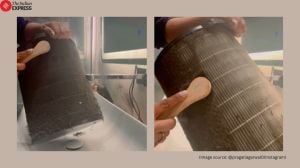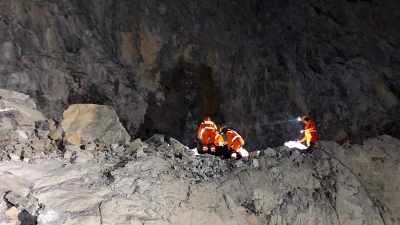‘Prepare, not provoke’ is India’s new strategy to tackle LAC standoff
The current strategy is in place at a time when legacy issues along the LAC such as Demchok and Depsang Plains are yet to be resolved and overall de-escalation looks unlikely soon.
 There has been a significant build-up of troops and a boost in military infrastructure in the region. (File)
There has been a significant build-up of troops and a boost in military infrastructure in the region. (File) Three years after 20 Indian Army personnel were killed in clashes with Chinese troops in the Galwan Valley, a month after PLA intrusions were detected in eastern Ladakh, India’s strategy to tackle the ongoing standoff along the Line of Actual Control will be to “prepare, not provoke,” top officials in the government have told The Indian Express.
Officials said the preparations are marked by instituting robust surveillance measures along the LAC, precision deployment at sensitive locations, adequate military infrastructure for sustenance and faster deployment of troops to the border to ensure optimum operational readiness to react when needed.
“For instance, India had to occupy crucial heights on the south bank of Pangong Tso in a surprise operation. There were certain gaps at that time in terms of logistics and positioning, but much of these have been plugged now,” officials said.
While Indian troops subsequently went back from the heights once a buffer zone was created in that area, the operation had given India crucial advantages on the negotiating table with China on the retreat of PLA troops from the north bank of the lake.
The current strategy is in place at a time when legacy issues along the LAC such as Demchok and Depsang Plains are yet to be resolved and overall de-escalation looks unlikely soon.
As many as 18 rounds of military talks and 27 meetings of the Working Mechanism for Consultation and Coordination on India-China Border Affairs (WMCC) have taken place in the last three years, which have led to the resolution of five post-2020 friction points – Galwan Valley, north and south bank of Pangong Tso and patrol points 17 and 15 in the Gogra-Hot Springs area – with the creation of buffer zones.
While the creation of buffer zones has curbed further flare-ups along the LAC in eastern Ladakh, both sides are not able to access the areas they did earlier while patrolling, and stop short of each other’s claim lines.
Officials in the know said in the recent high-level military meetings between India and China this year, the latter is learnt to have conveyed they are keen on normal border management, even as they have shown little receptivity towards any progress on Depsang Plains and Demchok.
Speaking on plans for the next few months, officials said tensions and trust deficit continue to remain along the LAC. A significant build-up of troops and a boost in military infrastructure in the region have taken place in the last three years.
A senior official, privy to developments along the LAC, said the next few months is unlikely to see any major change along LAC and the deployments and the development of military infrastructure will gather pace.
“Certain confidence building may keep coming up in every round of talks and the protocols will be refined and new terms of engagement will emerge. The idea is to formalise them soon,” the official said.
Additionally, there would be interactions at the local commanders’ level to reduce the trust deficit, even as the state of heightened alert and continuous surveillance will continue. Multiple validation exercises are likely to be conducted through the summer months.
“Marginal changes in plans and processes will be made, depending on the threat perception and season,” the official said.
Apart from the additional deployment of manpower, there will be a constant effort to use new technologies for detailed surveillance, and enhancement of operational efficiency with new generation weapon systems, long-range vectors and drones.







